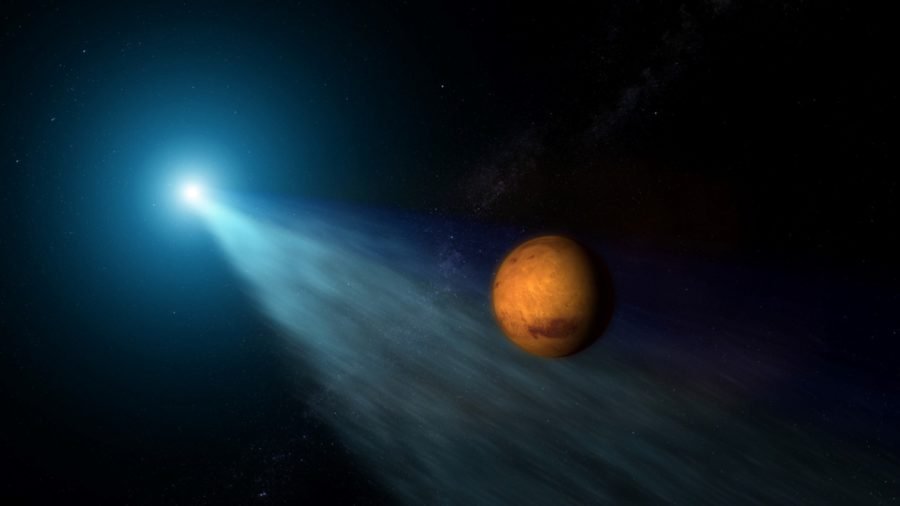NASA scientist warns humans under-prepared for next big asteroid impact

HUMANS SHOULD GET to work preparing for the next extinction-level asteroid event before it’s too late, a NASA scientist has warned this week at a conference in San Francisco.
Speaking at the American Geophysical Union 2016 Fall Meeting, Jason Nuth from NASA’s Goddard Space Flight Centre said there are more than 700,000 known asteroids or comets in our Solar System, and yet “comets have largely been ignored by people that are interested in defending the planet”.
There’s a reason for that, he went on to explain – but it’s not a very comforting one.
“The biggest problem is, basically, there’s not a heck of a lot we can do about it,” said Jason, who also co-authored a paper on this topic in the Journal of Cosmology back in 2009.
It takes five years to design, build and launch a spacecraft to deflect or destroy a comet, Jason explained. However, crucially, we may not have that much advance warning.
Comet Siding Spring, for example, was first discovered in January 2013, and just 22 months later, in October 2014, it passed “within cosmic spitting distance” (135,000km) of our neighbouring planet Mars.
To defend ourselves and the planet, Jason recommends building an interceptor spacecraft now and putting it into storage (and periodically testing it over time). He said we should also build and store an ‘observer’ spacecraft that can be launched on first warning of a potential incoming asteroid. The interceptor would be prepared for possible launch while the observer gathers data about the comet’s shape, spin axis and rotation rate, to enable the most effective ‘mitigation mission’.
Assuming the ‘Big One’ doesn’t arrive within the next five years, this approach would mean the stored spacecraft can be launched within a year, and could also be used to defend Earth from what Jason called a potential “sneaky” asteroid – one that might surprise us by coming from a place that’s hard to observe, such as from the direction of the Sun.
Watch Jason’s talk in full at the American Geophysical Union 2016 Fall Meeting in San Francisco USA this week:
READ MORE:
- Meteor strike reported off Queensland coast
- NASA to sample asteroid that might one day hit Earth
- World’s largest asteroid impact found in Australia

